#Will de Vetere
Text
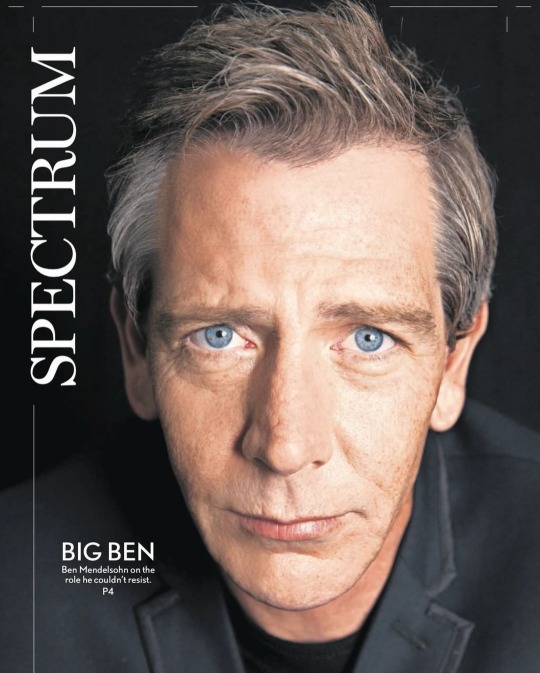
Interview below the cut:
‘I learned on the job’: Ben Mendelsohn’s new look
By Michael Idato
FEBRUARY 16, 2024
Captured by the lens of cinematographer Jaime Reynoso, Ben Mendelsohn’s Christian Dior cuts a slender, stylish figure in Apple TV’s The New Look. Mendelsohn delivers a luminous performance, played with nuance and subcutaneous emotion. What is not immediately apparent is that it all started in the most unpretentious of places: footy games and pizza nights.
Behind the new series sits an important friendship between Mendelsohn and writer/director Todd A. Kessler, formed in 2015 when Kessler cast Mendelsohn as family black sheep Danny Rayburn in his critically acclaimed Netflix thriller Bloodlines. Since then, the 54-year-old Melbourne-born actor says, an enduring friendship has formed.
“Todd is the easiest person, the most unstressed, unpretentious sort of person to be around,” Mendelsohn says. “I’ve taken him to meet everyone. I’ve taken him to the footy with all my mates. He’s one of those kind of guys. It was definitely the Roosters, but I can’t remember who they were playing,” adding with a grin: “I wish it was a Storm game because obviously, we’re better.”
The New Look sprang into being one night when Kessler “was at my joint, and he was knocking up a pizza from scratch,” Mendelsohn says. Kessler, who is a passionate reader of biographies, had started talking about the renowned French fashion designer Christian Dior, and about Dior’s “personal self, like an authentic self, if you like, and this other self, which he hates. He hates himself for not being able to be his authentic self while he conducts his business.”
“I just turned to him and said, well, when can we do this? Because I didn’t need any more than that,” Mendelsohn adds. “That’s such a universal kind of starting place. And I just went, well, when can we do it? Because after Bloodline, I’d do anything to try and work with him again on something where we’ve got a shot.”
In its final form, The New Look has more than a shot. It comes with a brilliant cast: Mendelsohn as Dior, French star Juliette Binoche as designer Coco Chanel, John Malkovich as Lucien Lelong, the French couturier in whose workroom Dior’s career began, and Game of Thrones star Maisie Williams as Dior’s sister Catherine, a French resistance fighter.
Written by Kessler with Jason and David Rabe, Amanda Coe, Carter Harris, Dani Vetere and Ning Zhou, the series explores the rise of Dior, his creation of “the New Look”, which revolutionised French fashion, his rivalry with Chanel and his close connection to his sister Catherine. Featured among the supporting cast: Cristobal Balenciaga, Hubert de Givenchy, Pierre Cardin and others. In terms of modern fashion history, it is an A-list lineup.
That “the New Look” was transformational for the Christian Dior brand speaks for itself. Founded in 1947, it took just seven years for Dior to account for half of Paris’s fashion export industry. It is owned today by the luxury conglomerate LVMH Moët Hennessy Louis Vuitton, headed by Bernard Arnault.
For Ben Mendelsohn, a boy who was raised on the outskirts of Melbourne, however, that’s a lot of haute couture history to take in. What does the starting point for researching a role like this look like? I ask Mendelsohn. “It looks bare,” he replies, smiling.
As an actor, he explains, he began with the man more than the world he inhabited. “When you’re coming at it, from my point of view, it looks like you want to build a frame, just a frame, and you don’t want to concern yourself where everything’s going to go and get all wound up in that because that’s not where the action is,” he says. “The action is this little field where you can try and surf.”
Mendelsohn took in “a sense of curiosity, unsureness, and I wanted to make sure I could hear the other person. That’s what I wanted to do. To try to get the mechanics of the accent, a sense of what the fabric world is like, what this is like, the family life, that kind of stuff. And that’s it. That’s it.”
Why? “Because I got taught by [Anthony] Hopkins something very, very important, and it changed the way I worked,” he says, declining to go into the details of what was contained in Hopkins’ acting tutorial. [The pair worked together on Spotswood in 1991, when Mendelsohn was just 22.] “I learned along the way,” he adds. “I learned on the job, talking to people.”
Perhaps the most striking revelation in the scripts themselves is not so much that life in World War II-era Paris was complicated – it was, as the history books attest to – but that not everyone’s loyalties lay where you might assume. Louis Vuitton, for example, had ties to the French [pro-Nazi] Vichy regime. Hugo Boss designed Nazi uniforms. Chanel was, for all intents and purposes, a Nazi spy. Cristobal Balenciaga was close to Spain’s Hitler-ally, General Franco. The list goes on.
Mendelsohn refrains from weighing in with an opinion except to say, essentially, that the historical record is there for examination. “I think as Aussies, we have a really strong sense of certainty about certain things; we have a high barrier for what’s good and what’s not,” he says.
What is in the series, he adds, is “the journey of that and the journey of how do you be in the world when you have this self that you don’t necessarily feel an overwhelming greatness about? How do you interact with it with values, integrity that meets reality and [situations where] you must adjust or fall off the side″.
“In the modern world, that’s got a really beautiful message because [Dior] is a very sensitive person, he’s a person with a lot of insecurities, a lot of doubt. He doesn’t feel good about himself in many, many ways,” Mendelsohn says. “And yet he steps forward.”
Kessler, speaking in a separate conversation, attributes what many might feel is a free pass for a brand like Chanel, to the slow exposure of the extent of Coco Chanel’s interactions with the Nazis. Much of the detail was kept in government archives which were not released until years after the war, “and by then, many of the people spoken about had passed away, and it didn’t make much news at the time”, Kessler says.
A few days before our interview, speaking at a press event, Mendelsohn articulated the struggle to position the work of artists in the wider spectrum of both their personal politics and, in Chanel’s case, events taking place around her.
“I think that you can admire the work, you can be moved by the creation, and you can have a sense of that person behind it or not,” Mendelsohn said. “It doesn’t stop the power of the creation and as to how one feels about the person, well, that’s dependent on any number of things.
“We’re not trying to paint sort of a moral story here, we’re just really trying to look at the circumstances and people that are trying to find their way through it and how they do it, coming from where they come from,” Mendelsohn added.
To some extent, Dior himself comes out of The New Look historically unscathed. At the same time, Caroline Bongrand, the fashion historian and former editor-in-chief of the fashion magazine L’Officiel, has described Dior as a man who suffered a lifetime of heartbreaks, including the painful secret of his sexuality.
That secret, coupled with his professional commitment to the creation of objects of beauty, created a kind of binary, the idea of a man divided by his pain and his joy. As an actor, I ask Mendelsohn, does he understand that conflict, as an authentic self himself with a library of performed false selves; as a man of a thousand faces, does he understand a man with two?
“I would think that Christian had a lot more than two,” Mendelsohn replies, with a wry smile. “I think I’m more interested in trying to just bring to life a sense of this particular narrative about him. In terms of the stuff about sexuality, I just felt like culturally we’d already won that space.
“Going back into that would be diverting what we were hoping to do,” Mendelsohn says. “I don’t think the same in such a binary sense, but I don’t know as much as [Caroline Bongrand] does, and that’s a very deliberate choice. I want to know enough that I can get a resonant sense, a vibe if you like, and then I want to dream into whatever it is to do the scene in the moment.”
The series’ costume designer Karen Muller Serreau was another critical relationship, not just because she dressed Mendelsohn in duplicates of Dior’s clothes, but because she also created the duplicate Dior collections that feature in the series. To be clear, the series used no vintage pieces; Muller Serreau was granted access to Dior’s heritage archives, where the original collections are stored, in order to create the duplicates.
“She’s incredible, and it’s an incredible achievement,” Mendelsohn says. Muller Serreau’s knowledge, he says, was critical in filling the gaps in his own. “I try as much as I can to swim in my lane and [depend on] those who are expert to tell me what it’s going to be. I approach it much more like a kelpie, than I do as a guy that stands at the top with a sense of solid knowing.
“And when I go and do it on the floor, I’m not giving you a certainty, I’m just giving a proposition,” Mendelsohn adds. “It’s just a proposition every time. And I’m standing well beneath an audience, trying to offer it up, imagining you as much more able to read and understand things than I am, but giving it my best and trying to do so with sort of a love letter vibe.”
In one sense, Mendelsohn doesn’t give himself enough credit. His performance in The New Look is remarkable, the confirmation of an actor whose career has taken him from Danny Clarke in The Big Steal (1990) and Dazey in Metal Skin (1994), to Pope in Animal Kingdom (2010) and Henry IV in David Michod’s The King (2019), with a thrilling stopover in Rogue One, as Orson Krennic, in an unforgettable face-to-mask meeting with Darth Vader.
“They are all there, [but] it’s very easy to confuse the piece that an audience takes to be the thing that it was [because] what you carry with you is the whole history of working those long, long days in those long, long things.” Mendelsohn adds that much of the time he was “not necessarily feeling very confident about anything, or while demonstrating this sort of pose of like, yeah, I can do it all.”
When he looks in the mirror, even in costume, he still sees himself, not the character he is playing. “When I was younger, it bothered me a lot more; the real thing I lament about [the face] is its pathways are very, very set. I used to wish that I could somehow train the face to do completely different things, But what happened is that I’ve become less concerned with trying to control it or trying to manoeuvre it for effect.”
But, he adds, there are echoes of all them – Danny, Dazey, Pope, Orson Krennic and Henry IV – still with him. “They’re all there. And the ones that are the most important end up being the ones that people love, and Babyteeth, for instance, will remain incredibly important, whether or not it’s taken up,” he says.
“When people love them, they stay in you,” he says. “Danny, Trevor [from 1987’s The Year My Voice Broke], there’s a lot of them ... just moments, moments and moments. And I’ve got 40 years of them, mate. I wasn’t looking to become an actor. I really wasn’t. I wouldn’t have dreamed of it. I wouldn’t have dreamed of it.”
The New Look is on Apple TV.
21 notes
·
View notes
Text
Mirabilie
Ieri la più grande agenzia pubblicitaria italiana (così si definiscono, ed è vero) ha comprato una pagina sul Corriere della Sera per "ringraziare" coloro i quali commentando la nuova campagna di Promozione Turistica dell'Italia, commissionata dall'ENIT e dal Ministero del Turismo, Open To Meraviglia, per ringraziarli: "Quando una campagna di promozione turistica rompe il muro dell’indifferenza e riesce a dar vita a un dibattito culturale così vivace come quello acceso in soli 5 giorni da Italia. Open to Meraviglia, rappresenta sempre qualcosa di positivo, (...) Grazie, perché non accadeva da anni che la notizia di una campagna istituzionale suscitasse una eco di tale portata (…) Grazie per le migliaia di visualizzazioni, commenti, meme e per le appassionate discussioni di questi ultimi giorni: ci hanno fatto sentire davvero la più grande agenzia italiana, con un immenso reparto creativo di persone al lavoro sullo stesso concetto".
Mi piace quest'idea che ha l'agenzia, che in questo mestiere davvero è un gigante (la Carmencita di Carosello per il caffè Lavazza, per dire è figlia del genio del fondatore Armando Testa) di cosa sia dibattito culturale: ridere tra lo sgomento e il faceto sul lifting alla Venere del Botticelli, della maglietta a righe per mangiare la pizza, sui posti scelti, sul costo della campagna, sul dominio internet non comprato, sulle immagini stock e così via. Era davvero questo l'obiettivo?
La risposta la dà indirettamente la stessa agenzia: L'obiettivo è quello di promuovere l'Italia all'estero, puntando su un target proveniente da 33 Paesi. Anche e soprattutto su mercati culturalmente molto diversi dal nostro, accendendo l'attenzione in modo facile, diretto e immediatamente riconoscibile su ciò che tradizionalmente contraddistingue l'Italia nel mondo. Parlare dell'Italia significa tener conto di tantissime sensibilità e sfumature. Un capitale culturale e umano così unico e prezioso che spinge tutti a lavorare, ed anche a dibattere, con una straordinaria passione.
Detto in termini un po' brutali, è lo stesso principio che spinse il Direttore degli Uffizi Schmidt a concedere una visita esclusiva e notturna alla più nota influencer italiana con famiglia, per poi poter dire che i weekend successivi la percentuale di visitatori sotto i 25 anni era aumentata del 30%. Una campagna così probabilmente è indirizzata a turisti come questi :

che si fanno i selfie come se fossero ai Tropici, ma sono sui binari di Auschwitz. Non importa molto che, ed è cronaca, persino le città meravigliose scelte come panorama per i finti scatti della nostra venere in lifting davvero si lamentino dell'arrivo massiccio di turisti "mordi e fuggi", dello svuotamento dei centri storici, dell'imborghesimento di aree urbane senza possibilità di reali vantaggi per la comunità che la abitava, e così via.
E per restare un po' polemico, scommetto che i milioni che si sono lamentati dello stereotipo con cui ci presentiamo ai 33 Paesi esteri sono in molti casi quelli che sfottono per esempio i francesi perchè non hanno il bidet (che si chiama così dal francese, termine che vuol dire pony, installato da Christophe Des Rosiers, presso la residenza del Primo Ministro francese ad uso della moglie, Madame De Prie. Grazie alle memorie dell’allora Ministro degli Esteri – nonché amante di Madame De Prie – sappiamo che nel 1726 il gentiluomo fu ricevuto dalla signora, imbarazzatissimo, mentre era a cavallo di uno strano sgabellino a forma di violino intenta a rinfrescarsi).
Per il piacere di tutti gli altri contro gli stereotipi, con l'aiuto di chi vorrà, si possono segnalare delle meraviglie nascoste e poco conosciute del nostro Paese. Inizio io con un posto stupendo

L'anfiteatro Romano di Santa Maria Capua a Vetere, in provincia di Caserta, il più grande del nostro Paese dopo il Colosseo. Tra l'altro vicino c'è Capua e il suo meraviglioso centro Storico Antico e a Sant'Angelo In Formis, una frazione di Santa Maria, vi è una favolosa Abbazia di Sant'Angelo, di epoca Longobardo-Normanna, con affreschi del X secolo.
42 notes
·
View notes
Text
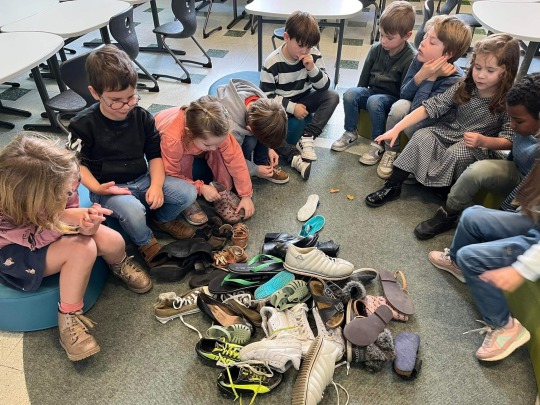




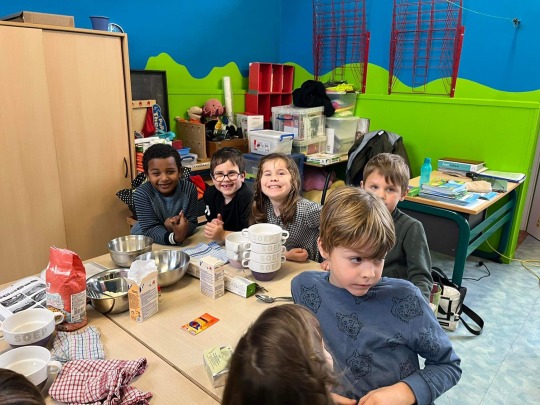


Veters strikken en marsepein maken! De Sint komt bijna!
7 notes
·
View notes
Text

Honouring Ceres at the start of her Cerealia festival, with gratitude for the nourishment & abundance she brings me.
"Obvious are the bounteous promise and gifts of the Goddess. Ceres delights in peace: pray you farmers, pray for endless peace. Honour the goddess with wheat, and dancing salt grains, and grains of incense offered on the ancient hearths. Ceres is pleased with little, if it’s pure in kind."
Sponte deae munus promeritumque patet.
Pace Ceres laeta est; et vos orate, coloni, perpetuam pacem.
Farra deae micaeque licet salientis honorem detis et in veteres turea grana focos. Parva bonae Cereri, sint modo casta, placent. Ovid. Fasti.
Honrando a Ceres ao comezo da sua festa de Cerealia, con agradecemento pola alimentación e a abundancia que me trae.
"Espontáneamente o favor e a promesa da Deusa está claro. Ceres delétase na paz: e vós, labregos, orade pola paz perpetua. Honra á deusa con trigo e mica e grans de incenso ofrecidos nos antigos fogares. Ceres está satisfeita con pouco, ofrecido dun modo puro".
2 notes
·
View notes
Text
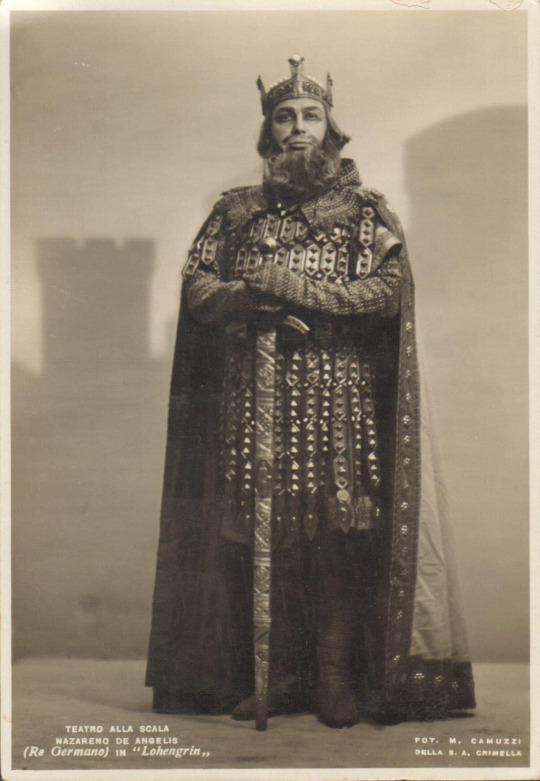
Here we see the Italian bass Nazzareno de Angelis (1881 – 1962) as King Henry from Lohengrin. I love the imposing costume and regal pose.
De Angelis was born at L’Aquila on 17 November, 1881 and began his musical life as a boy soprano, first with local choirs, then at the Capella Sistina in the Vatican. After his voice lowered, he studied with one Dr. Faberi at the Accademia di Santa Cecilia in Rome. For several years, he and his mentors wondered about his true vocal placement, and he studied both baritone and bass scores with equal intensity. The top of his voice was tremendous, but it became increasingly clear that it was centred where kings, prophets and devils live. His last two years at the Accademia were spent developing repertoire, and he gave several recitals there before making his opera début at the Comunale of L’Aquila in May of 1903 in Linda di Chamounix, followed by an opera called“L’Educate di Sorrento, by E. Usiglio, at the same theatre.
Hearing of his enormous success the management of Rome’s Teatro Quirino immediately engaged him, and, in early July, he débuted in Norma. He subsequently appeared at the Teatro Adriano as Il Spettro in Hamlet, to the Ofelia of Maria Barrientos and the Hamlet of Battistini, followed by Rigoletto and Tosi Orsini’s Yanthis. In 1904, after some twelve performances of La Gioconda at the Teatro Lirico of Milan, he appeared at Santa Maria Capua Vetere as Colline and at the Quirino in La Favorita, Il Barbiere di Siviglia (Basilio), Carmen (Zuniga), Ernani, Norma and Rigoletto. Carlo Galeffi was his Rigoletto in several performances. He toured the Netherlands from December of 1904 to May of 1905, singing such diverse roles as Dr. Grenvil in La Traviata, Zuniga in Carmen, Sparafucile in Rigoletto, Ferrando in Il Trovatore, Fouquier-Tinville in Andrea Chénier, Tom in Un Ballo in Maschera, Angelotti in Tosca, Basilio and Raimondo in Lucia di Lammermoor. The company gave performances in Amsterdam, Rotterdam and The Hague.
In the Autumn of 1905 he appeared at Mirandola in La Gioconda, at Parma’s Teatro Reinach in Rigoletto and Faust, and at Cagliari’s Teatro Regina Margherita as Alvise, along with those first historic performances of Mefistofele. Gaspare Nello Vetro’s Teatro Reinach says of his Faust Mefistofele: “The young Nazzareno De Angelis, now at the outset of his career, received the greatest applause and had to repeat ‘Dio dell’ Or’ at every performance.” At Cagliari, after his first performance of Boito’s Devil, the applause was interminable and it immediately led to a contract at Bari’s very important Teatro Petruzzelli, where he added Lohengrin and Iris to his roster of operas.
In the Spring of 1906 he left on his first South American tour, appearing at Santiago de Chile and Valparaiso from June to November. He sang nine roles to enormous success. On 16 August, the region was stunned by an earthquake so severe that performances had to be suspended until 1 September. The opera house at Valparaiso was almost completely destroyed, and it was there that the greatest damage occurred. Hundreds of people died, and the wounded numbered in the thousands. Despite recurring after-shocks, the season eventually returned to normal and, in addition to his scheduled performances, he participated in several hastily arranged benefits for earthquake victims. Among his new assignments were Ludovico to the commanding Otello of Antonio Paoli, and Marcel in Gli Ugonotti. His receptions were increasingly enthusiastic, and, before the season ended, he happily agreed to return. That agreement was honoured in both 1908 and 1909. El Mercurio said of him: “…. at the end of the Prologue to Mefistofele, De Angelis received a huge and most sincere ovation.” A later review stated that “he has reminded us again as Mefistofele how superb an artist he is, and in Germania has made us marvel at his versatility in this new role”.
The 1908 season saw him in eight operas including Gli Ugonotti with Hariclea Darclee, and in 1909, he sang nine roles including the creator part of Aquilante in Gloria After his appearances at Santiago, he is thought to have sung in Buenos Aires at the Teatro Coliseo, but no details have been unearthed about his roles during that engagement. He returned to the South American continent in 1910, 11, 12, 14, 19 and 1926, and he appeared in Buenos Aires, Rosario, Montevideo, Rio de Janeiro and São Paolo. He sang Mefistofele in every theatre at which he appeared, and in every season, except for 1914. The list of operas he performed in South America only is long: Tannhäuser, La Sonnambula, I Puritani, Gomes’s Il Guarany and Salvator Rosa, Galitsky in Prince Igor (his only Russian opera, though sung in Italian), Les Huguenots (also in Italian), de Campos’s Um Caso Singular, Verdi’s Otello and Franchetti’s Germania.
On 15 January, 1907 he débuted at La Scala as Alvise in La Gioconda and appeared for the first time in Tristan und Isolde, La Wally and as Aquilante de Bardi in the world premiere of Cilea’s Gloria. Despite recurring arguments with the theater’s management, including one four year hiatus, he would sing twenty four roles over twelve seasons. The year offered two other very important debuts, Alvise at the Teatro Verdi of Firenze with Eugenia Burzio, and King Marke at Bologna’s Teatro Comunale with Amelia Pinto, Giuseppe Borgatti and Giuseppe Pacini. Tristan und Isolde received fifteen performances and was followed by De Angelis’ only appearances in Tschaikovsky’s Iolanthe.
1908 brought with it the beginning of his Scala partnership with Ester Mazzoleni. They first appeared in Franchetti’s Cristoforo Colombo conducted by Toscanini in a run of 16 performances, followed by a revival of La Forza del Destino. Mazzoleni described the event:
You will not be able to imagine what happened on that opening night. Icilio Calleja started ‘O tu che in seno agli angeli’ both too soon and out of tune, at which point all hell broke loose in the house. The theatre took on the atmosphere of a bullring, and, as often happens when things are not going well, the audience vented its rage at everything in sight. Both Pasquale Amato and Luisa Garibaldi were booed and hissed without mercy. The only ones who escaped their fury were De Angelis and myself. At the end, after almost collapsing from nervous exhaustion, we received a standing ovation. Notwithstanding our personal success, Toscanini, eyes ablaze, cancelled the remaining performances.
On 19 December, 1908 De Angelis and Mazzoleni appeared in the historic production of Spontini’s La Vestale, a revival that was repeated 16 times, and then travelled to Paris. Verdi’s I Vespri Siciliani was next in the list of successes, and, on 30 December, 1909, they caused a sensation in Cherubini’s Medea. In March 1910, they appeared in what was to be their last opera together, Meyerbeer’s L’Africaine. This unbroken string of personal triumphs is one of the most legendary of all stories associated with the Milan theatre. Among other memorable evenings at La Scala was the world première of Montemezzi’s L’Amore dei Tre Re on 10 April, 1913 in the role of Archibaldo, which he later premièred at the Colón of Buenos Aires, the Costanzi of Rome, Rio de Janeiro, São Paolo and Trieste’s Teatro Verdi.
Of his Archibaldo in the Rome première of L’Amore dei Tre Re, Il Tempo, on 15 March, 1919, said: “De Angelis, the old lion, he of the pungent, powerful voice, sang the ideal performance of Montemezzi’s king.”
Most of 1910 was spent in the Western Hemisphere. On 31 May De Angelis debuted at Buenos Aires’ Teatro del Opera in Lohengrin with Salomea Krusceniski, Luisa Garibaldi, Dygas and Riccardo Stracciari ,and he completed his season in Aida with Giannina Russ, Garibaldi, and Giovanni Zenatello, Norma with Russ, Garibaldi and Dygas, Mefistofele with Krusceniski and Dmitri Smirnov and Gotterdammerung with Krusceniski and Dygas. In August, the company visited Montevideo for a three week season. after which De Angelis traveled to Chicago for his only performances in the United States.
On 3 November, 1910 he sang in the inaugural performance of the Chicago Civic Opera Company as Ramfis. The cast included Karolewicz, de Cisneros, Bassi, Sammarco and Dufranne. He subsequently sang Colline in La Boheme with John McCormack, Raimondo in Lucia di Lammermoor and Ashby in La Fanciulla del West. On 18 January 1911, in a closing night gala, he appeared as Ashby with Carolina White, Caruso and Sammarco. It is curious that De Angelis accepted a contract with Chicago for roles so small when he had already become the most important bass at La Scala and in many of South America’s theatres. Perhaps the heady company that he would be keeping attracted him; that, with the hope that other more important roles would come his way. He visited several other cities, but, outside of a single appearance in Fanciulla del West at Milwaukee in November.
Upon his return to Italy, De Angelis prepared for the most important début of his career: the Costanzi of Rome. The theatre was to present a gala ‘Musical Exposition’ of opera and ballet in celebration of the fiftieth anniversary of the declaration of the Kingdom of Italy. Among the notable events were the company premières of Verdi’s Macbeth and Donizetti’s Don Sebastiano and the Italian première of La Fanciulla del West, with Eugenia Burzio and Giovanni Martinelli. Serge Diaghilev’s Ballet Russe presented local premières of Les Sylphides and Giselle with Nijinsky, and Toscanini conducted several of the operas. In the midst of this carnival of riches, on 16 April, 1911, De Angelis débuted as Don Basilio with the stellar cast of Graziella Pareto, Umberto Macnez, Titta Ruffo and Giuseppe Kaschmann. The theatre was packed with family, friends, colleagues from his days at the Vatican and the Conservatorio, and former teachers. Dal Costanzi all’Opera states that “it was an evening of surpassing grandeur, refinement and polish, a performance beyond any criticism”. Il Giornale d’Italia reported that “De Angelis convinced a highly expectant audience that he is truly an artist of the first rank….The tumultuous applause that greeted the singers became a roar each time that he appeared before the great curtain”. He was to tell Paolo Silveri many years later that it was the most emotionally satisfying evening of his career. The bond between singer and city had been permanently cemented and he would return in thirteen additional seasons in seventeen roles.
On 23 May, De Angelis debuted at the Teatro Colon in Buenos Aires as the Landgrave in Tannhauser with Pasini-Vitale, Ferrari-Fontana and De Luca. He sang in ten operas, including his first performances in Don Carlo with Agostinelli, Garibaldi, Constantino and Ruffo, La Sonnambula with Barrientos and Bonci and I Puritani with Barrientos, Bonci and De Luca. The Colon hosted him the following year in seven operas, including his only performances as Friar Lawrence in Gounod’s Romeo et Juliette with Lucrezia Bori and Giuseppi Anselmi. De Angelis sang at the Colon for the last time in 1914, but he returned to Buenos Aires in 1919 as Basilio, Mefistofele, Galitzky, Mose and Archibaldo at the Teatro Coliseo.
On 10 October, De Angelis sang Mefistofele at the Costanzi for the first time, and it would be the defining event of his career. The first night audience cheered for nearly an hour and the next day’s reviews were among the most laudatory ever seen:
Mefistofele at Rome - Il Corriere d’Italia - 11 October, 1911. “This singer and magnificent actor can truly claim to be the greatest basso currently on the lyric stage. Extraordinary power, an excellent voice, clear and perfect diction and impeccable technique were all completely confirmed last night. His success was enormous.”
His triumph was reported on the front page of newspapers throughout Italy and he was immediately asked to sing the role in virtually every Italian theatre. Within four months he had débuted at Turin’s Regio, Trieste’s Verdi and the San Carlo of Naples, where he sang fourteen performances of the opera. Barcelona’s Liceo received him with enormous acclaim in April of 1913 and Mefistofele was to serve as his debut role at Venice’s Fenice, Genoa’s Carlo Felice and Politeama, Brescia’s Grande, Padua’s Verdi, Palermo’s Massimo and the Verona Arena. In 1918, De Angeles sang the role for the first time at La Scala with Linda Cannetti, Elena Rakowska and Gigli, and, in 1920, at Milan’s Dal Verme, he appeared in some fifteen performances of the opera with Hina Spani as Margherita. It was so overwhelming a part of his career, that in 1923, it was the only role he sang.
On 4 April, 1915, he sang Mosè for the first time, appearing at Rome’s Teatro Quirino and took the role to Firenze, Livorno’s Teatro Goldoni, the Comunale of Bologna and Milan’s Dal Verme. The cast included Giannina Russ, Adele Ponzano, Luigi Pieroni and Alessandro Dolci, and was conducted by Mascagni. The tour was among the very few performances he gave between the Spring of 1915 and the Winter of 1918. A 1916 press release from the Teatro Municipal of Santiago, Chile notes that, because he was serving in the Italian armed forces, he would not be able to appear. He returned to the stage at Rome’s Costanzi in February, 1918, and sang Mosè there on 23 April.
Mosè - 2 June, 1918 - Rome Dal Costanzi all’Opera. “On the closing night, which presented the tenth performance of Mosè, De Angelis achieved one of the greatest successes of his career.”
La Tribuna said: “The great bass received an ovation perhaps without parallel in memory. His performance was of monumental proportions, and the audience responded in kind.”
Over the next several years, De Angelis sang Mose at La Scala, Buenos Aires, Rosario, Montevideo, Rio de Janeiro, Sao Paolo, Bergamo, Genoa, Ferrara, Trieste, Turin, Ancona, and, for the last time in 1925 at the Verona Arena.
Although De Angelis’ stage debut was in Linda di Chamounix, Donizetti and Bellini seem not to have been composers for whom he felt much affinity. In 1911, he sang in La Sonnambula and I Puritani at the Colón of Buenos Aires and, on the closing night of the 1926 season at Rio de Janeiro, he sang one additional lonely performance of I Puritani. By 1912, he had stopped singing in La Favorita and Lucia di Lammermoor and seems never to have appeared in a Donizetti opera again. He sang important revivals of Norma with Giannina Russ, Claudia Muzio, Vera Amerighi-Rutili, Bianca Scacciati and Iva Pacetti, but they were few in number and widely separated in time.
Lucia di Lammermoor at Buenos Aires - La Prensa - 27 May, 1911 Though the soprano role is the centrepiece of this opera, Barrientos’s grand companions, Constantino, Ruffo and De Angelis were all triumphant.
Norma at Rome - Il Tevere - 28 December, 1928 The evening confirmed the triumph of Norma, and of Muzio, Luisa Bertana, the tenor Mirassou and Nazzareno De Angelis, who conferred, with beauty of voice and physical presence, the ultimate realization of Oroveso.
Don Basilio in Il Barbiere di Siviglia was a very important role in De Angelis’s career, and he sang it in both the largest and smallest theatres. In the Spring of 1916 he toured among Parma’s Regio, Naples’ San Carlo, Pisa’s Verdi, Pesaro’s Salon Pedrotti and Rome’s Quirino in commemoration of the 100th anniversary of the opera’s premiere. The cast for the performances was Fanny Anitua as Rosina; Carpi and Macnez sang Almaviva; Galeffi portrayed Figaro and Kaschmann, Bartolo. At Rome, the cast included de Hidalgo, Salvati and De Luca. He sang it at the Costanzi in 1919 and garnered his usual superlatives.
Il Barbiere di Siviglia at Rome - Il Messagero - 16 February, 1919 “This old opera rarely has one divo, fewer times two, but tonight there were four, de Hidalgo, Schipa, Galeffi and De Angelis, truly an Olympus of singers. It was a marvellous evening, one which made us almost believe that we were seeing the opera for the first time. The soloists sang as though inspired by some magic spirit.”
In 1919, De Angelis toured to Buenos Aires, Montevideo, Rio de Janeiro and Sao Paolo as Basilio with Angeles Ottein, Tito Schipa and Armand Crabbe. It was on this tour that he appeared in Prince Igor, Il Guarany and Salvator Rosa for the only times in his career. In 1921 he appeared as Basilio at Spoleto with the inimitable Conchita Supervia and in 1922 he appeared in a lavish production at La Scala with de Hidalgo, Hackett and Galeffi. In 1925 he made both his Swiss debut and farewell as Basilio at Lugano.
His Wagner roles were seven: King Marke in Tristan und Isolde, Wotan in both Das Rheingold and Die Walküre, King Henry in Lohengrin, Hagen in Götterdämmerung, the Landgrave in Tannhäuser and Gurnemanz in Parsifal. In 1914, he sang Gurnemanz an amazing twenty seven times during La Scala’s first season of Parsifal and premièred the opera at Buenos Aires’s Teatro Colón the following May. In January 1922, he returned to La Scala for eleven performances in a cast that included Helene Wildbrunn, Amadeo Bassi, and on the fourth night, the debut at that theater of Apollo Granforte. He appeared at Paris as Gurnemanz in May of the same year. De Angelis appeared in Die Walkuere at Rome, La Scala, Naples, Rio de Janeiro and Sao Paolo and in Das Rheingold at Bologna, Rome and La Scala. In the winter of 1938 at Rome, he sang Wotan in Das Rheingold and Die Walküre, as well as Hagen, in the first ‘Ring’ ever performed completely in Italian. The undertaking was supervised by Tullio Serafin and the four operas were broadcast throughout Italy. De Angelis’ last Wagner performances were as Gurnemanz at the San Carlo of Naples in April, 1938.
Of his performances in the 1938 ‘Ring’at Rome, the following reviews are quoted.
Il Messagero, 25 January - Das Rheingold De Angelis sang with enormous resonance. His achievement was hard to imagine, sung with the greatest of expression, vigour and vibrancy.
Il Piccolo, 27 January - Die Walkuere He maintained a level of excellence throughout this very long and difficult role that was exceptional.
Among Verdi’s operas, he sang Zaccaria in Nabucco, Silva in Ernani. Ferrando in Il Trovatore, Grenvil in La Traviata, Sparafucile in Rigoletto, Tom in Un Ballo in Maschera, Padre Guardiano in La Forza del Destino, Procida in I Vespri Siciliani, Fiesco in Simon Boccanegra, King Philip in Don Carlo, Ramfis in Aida and Lodovico in Otello. Interestingly, he sang far fewer performances of Verdi than he did of Wagner. In fact, in no Verdi opera, outside of Aida, did he sing more than twenty five performances, and Simon Boccanegra, had only one revival, at La Scala in 1933. It was his last new role.
Aida - Rome - La Tribuna - 6 October, 1911 The Ramfis of Nazzareno De Angelis showed an extraordinarily robust, mellow and vibrant voice.
Nabucco - Rome - La Tribuna - 2 June, 1916 A memorable evening of art, of patriotic love.... in which all the artists offered a spectacle of singular interest. The interpreters, Nazzareno De Angelis in the white robes of the high priest, Zaccaria, Carlo Galeffi, Cecilia Gagliardi and Fanny Anitua gave superb examples of their great art.
Non-operatic appearances were fairly infrequent. He sang in Verdi’s Manzoni Requiem several times, most importantly at La Scala in 1913 under Toscanini’s direction, at Rome’s Teatro Augusteo in both 1913 and 1922, and in 1924 at Vicenza and the Verona Arena. The Verona engagement with Rinolfi, Minghini Cattaneo and Taccani, was so successful that after two performances in the outdoor stadium, an additional two were given at the Teatro Filarmonico with Lucia Crestani singing the soprano music. In May 1938 he returned to the work for the last time when he sang it at Rome’s Teatro Adriano with Caniglia, Stignani and Alessandro Granda. On 4 December 1924, under Toscanini’s direction, he and Hina Spani sang at Giacomo Puccini’s Funeral in the Duomo of Milan, and on the 29th , the program was repeated at La Scala. Among De Angelis’ more interesting concerts were three at Rome’s Teatro Quirino. On 4 April 1915 he appeared with Russ and Battistini in an all Mascagni programme honouring the composer. In September, 1915 he appeared in a composition called Inno alla Patria by Zandonai accompanied by Gabriella Besanzoni, and in June 1916, he sang in Canto di Guerra, written by the great bass-baritone Giuseppe Kaschmann.
De Angelis’ career in Iberia was not impressive. He sang Mefistofele at La Coruña, Spain in 1908 and appeared at Barcelona’s Liceo in the Spring of 1913 as Boito’s Devil. The La Coruña engagement includes a reference to Gounod’s Faust, which, if it were to have happened, would have been an extremely interesting juxtaposition of roles. Perhaps it did. There are announcements of a second engagement at La Coruña in 1912, but I have found no details. It would seem, from the evidence, that he never appeared in Portugal.
By 1927, De Angelis was averaging no more than 20 performances a year, though he continued to make recordings at a prodigious rate. In 1934, his only appearances were as Mefistofele at Piacenza and, about a year later, he sang Oroveso, Gurnemanz and Padre Guardiano at Genoa’s Carlo Felice. After a three-year absence, he returned to Rome’s Teatro Reale in January of 1938 for Mefistofele and the celebrated ‘Ring Cycle’. In August, after a debut at Rome’s Caracalla as Mefistofele, he sang his valediction at Naples’ Arena Flegrea as Boito’s Beelzebub, with Delia Sanzio, Margherita Grandi and Granda. De Angelis had appeared in fifty seven operas and had sung well over fifteen hundred performances.
It has been reported that he gave occasional recitals until about 1942. Upon his eventual retirement, he taught in Milan and, later, at his favorite city, Rome. He died on 14 December, 1962, in Rome, at the age of 81.
#classical music#opera#music history#bel canto#composer#classical composer#aria#classical studies#maestro#chest voice#Nazzareno de Angelis#bass#Lohengrin#Richard Wagner#Wagner#Paris Opéra#La Scala#classical musician#classical musicians#classical voice#classical history#classical art#musician#musicians#music education#music theory#history of music#historian of music#diva#prima donna
4 notes
·
View notes
Note
You know I’m going to be honest when I saw this award I did pause a bit because it seems like it’s an award for future projects which is a bit strange this year cause as much as Z has conquered TV she is having her biggest movie year later this year where she will lead her own first theatrical release . I do feel that sometimes events give IT girls awards just for publicity and to make sure they attend like Taylor Swift being innovator of the year for iHeart. That’s why IT girls usually have an expiration date This is not unique to Z and what do people want her to do refuse I disagree with her being overexposed she is actually smart for not attending some of this awards shows and keeping a low profile unlike Sydney etc. I think she knows the pitfalls of being an IT girl and staying of the limelight unless absolutely necessary. I do think she will attend here as an honoree and she has being given a full month notice to go. I’m curious though who else has won this award so we can accurately see the criteria.
I’m curious though who else has won this award so we can accurately see the criteria.
In answer to your question....
Zoe Saldana
Some other winners include:
Michael B. Jordan
Glenn Powell ("Star of Tomorrow" Award)
Taron Egerton
Dakota Johnson
Kumail Nanjiani
Charlie Hunnam
Jessica Chastain
Paul Rudd
Adam Sandler
Drew Barrymore
PLENTY of celebrities have won various awards at CinemaCon. Zendaya isn't an anomaly. 🤷🏾♀️
14 notes
·
View notes
Text
youtube
Tommaso Traetta - Stabat Mater
Orchestra: Ensemble Giovanile Ambrosiano
Choir: Coro Polifonico Farnesiano di Piacenza Conductor: Italo lo Vetere
Soloists: Svetla Krasteva, soprano Ilia Aramayo Sandivari, mezzo-soprano Antonio de Lucia, tenor Robert Gierlach, bass
3 notes
·
View notes
Text
Sempre nel corso delle stesse udienze, la genetista Nicoletta Resta (perita nominata dalla Corte d’Assise d’Appello) affermò che nel luogo in cui fu preparata la strage c’era stata e si era trattenuta certamente una donna in quanto resti di Dna femminile furono estratti dai reperti rinvenuti nei pressi del luogo dell’esplosione.
La mafia non aveva mai acconsentito che una donna partecipasse a una qualsiasi sua azione, per cui tale donna doveva necessariamente provenire da un ambito non mafioso.
Qualche anno dopo si svolse (sempre a Caltanissetta) il processo “Capaci bis”. Nel corso delle udienze questa volta Riggio venne preso sul serio e fu organizzato un confronto tra lui e Peluso, questa volta indagato per la strage del 23 maggio 1992.
Riggio: «Peluso mi disse: “Ma tu sei sicuro, credi ancora che il tasto del telecomando l’abbia premuto Brusca?” Io rimasi spiazzato. “Mah – dissi - non lo so perché mi dice questo”. Però ho intuito subito, nell’immediatezza dei fatti, che sicuramente conosceva, sapeva qualche cosa, o diretta o de relato o non so come, che gli facesse affermare questa cosa che Brusca effettivamente non avesse premuto lui».
«O era convinto che avesse premuto, diciamo, questo famoso timer per fare saltare in aria Falcone», disse ancora Riggio, che poi aggiunse: «Nel periodo di detenzione a Santa Maria Capua Vetere ho conosciuto diversi ex appartenenti alle forze dell’ordine. Tra questi anche Peluso, ispettore della questura di Roma e un tale Giuseppe Porto. So che entrambi hanno avuto rapporti con i Servizi segreti».
Insomma, sul luogo della strage non c’erano solo mafiosi, ma anche appartenenti a corpi di polizia e ai servizi segreti, compresa la misteriosa donna. Tant’è che i magistrati arrivarono a formulare l’ipotesi di un doppio telecomando di innesco, uno diciamo finto in mano a Brusca e uno vero premuto dai molto più esperti uomini dei servizi.
Franco Fracassi - The Italy Project
4 notes
·
View notes
Text


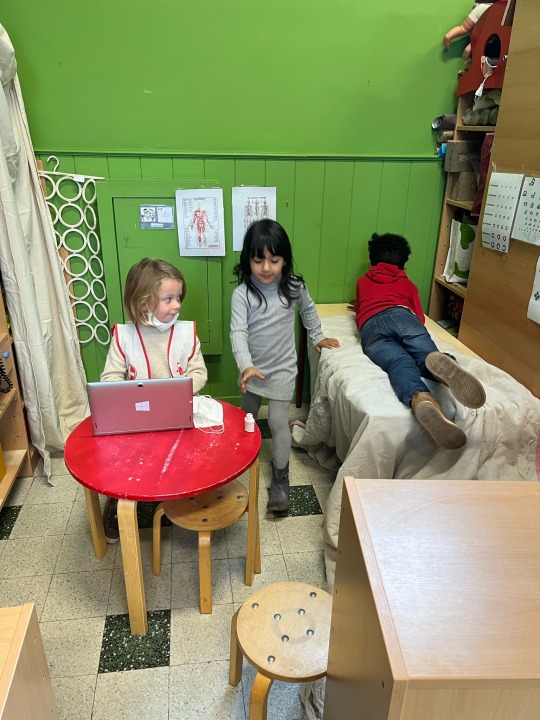



Thema mijn lichaam:
Collages maken met tijdschriften en lichaamsdelen stempelen.
Dokter spelen en het juiste voorschrift meegeven om naar de apotheker te gaan.
Boekjes beluisteren en lezen in de leeshoek
Veters strikken
4 notes
·
View notes
Text
FITF events in record stores across Italy

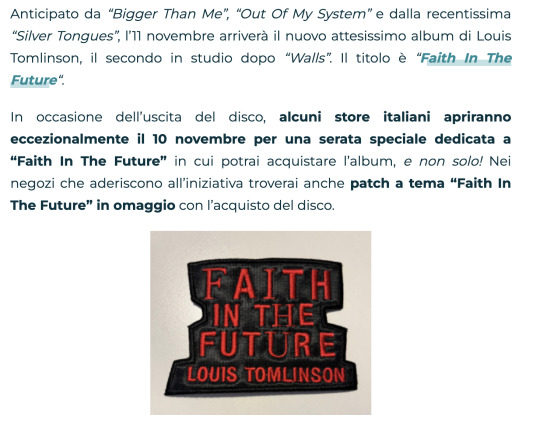



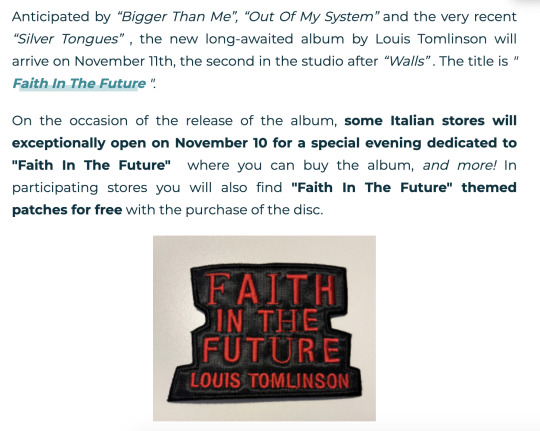


Pistelli e Bartolucci a FERRARA
Dischi Volanti a VERONA
Dischinpiazza a MODENA
Angolo della Musica Srl a UDINE
Semm Music Store & More a BOLOGNA
Disc Jockey a CREMONA
Musicatelli a PORDENONE
Casa Musicale Ancona ad ANCONA
Discorso a SACILE (PN)
Mondo Musica a CASALGRANDE (RE)
Musical Box a BESOZZO (VA)
De Santi Snc a CASTELFRANCO VENETO (TV)
Casa Del Disco a MESTRE (VE)
Indie a TREVISO (TV)
Frigerio a COMO
Flexi a LUGO (RA)
Filmusica di Branco Stefano a VALDAGNO (VI)
Varese Dischi Sas a VARESE
Sky Stone And Songs Sas a LUCCA
Cory Music Vieri n. & c. ad AREZZO,
Symphony Di Palomba Fabrizio a LIVORNO
disco shop di c.f.l.t.& c. Snc a POGGIBONSI (SI)
Maistrello Musica di M. P. a RIETI
Galleria Del Disco Vernich Fi a FIRENZE
Discoteca Laziale a ROMA
Compact La Dischetteria a MONTEBELLUNA (TV)
Firefly Snc Di Laguardia E Figli a POTENZA
Riva Musica a CATANIA
Disclan Di E. Maysse a SALERNO
Camarillobrillodischi di Silvia Limongiello ad AVELLINO
Messaggerie Sarde a SASSARI
Diamantik di Cantore Michele a MARTINA FRANCA (TA)
Juke Box Sas Di Del Prete-Giordano a CASERTA
Musica E Ricordi ad AOSTA
Muzak Dischi a CUNEO
Exit Music a SAVIGLIANO (CN)
Blackstar s.n.c. Di Costamagna a IMPERIA
Cigna Dischi a BIELLA
Discoclub a GENOVA
Soundgarden a L’AQUILA
Foto Carlo Store a VALLECROSIA (IM)
Ritmi Urbani a SANTA MARIA CAPUA VETERE (CE)
Casa Musicale Niccoli Di Antonella Niccoli & c. sas a PRATO
Disco Shop s.r.l. a LECCO
Pinto srl a BRESCIA
Gabbia srl a PADOVA
Perfect Vinyl Music Store a VALENZA (AL)
Cd Club Entertainment a REGGIO CALABRIA
Top Dischi a BENVENTO
Idee Musicali Roma a ROMA
Calboli Dischi a FORLÌ.


Link for all info
2 notes
·
View notes
Text
Oberlauch (Duitsland) - Zoutelande- Middelburg (Nederland)
Woensdag 24 augustus
Mijn laatste nacht wildkamperen was een heerlijke rustige nacht. Wanneer ik wakker word schuif ik de deur van mijn campertje open en kijk ik vanuit mijn bed over het veld en de heuvels die in de zon langzaam ontwaken.


Het is best raar dat er nu een eind komt aan mijn lange roadtrip door Europa. Om het einde zo lang mogelijk uit te stellen besluit ik nog een mooie wandeling te maken van tien kilometer die hier op een informatiebord wordt weergegeven. Ik kom erachter dat ik mij in het natuurgebied Duits-Belgische Naturpark Hohes Venn Eifel bevindt 😊. Gisteren had ik hier niet opgelet, maar het triggert mij wel om meer van dit natuurpark te weten te komen 😉.
Uiteraard eet ik eerst rustig mijn ontbijtje op en maal ik mijn koffieboontjes voor een goede bak koffie terwijl ik geniet van het zonnetje. Mijn Franse 'vrienden' liggen nog op één oor.
Wanneer ik mijn veters van mijn wandelschoenen strik, mijn rugzak heb gevuld met wat eten voor onderweg en mijn inmiddels gedeukte metalen bidon gevuld heb met water, zijn François en Nathalie ontwaakt. We maken nog een kort praatje voor we elkaar gedag zeggen en elkaar verder een goed leven wensen. Dat klinkt misschien wat raar, maar zoals eerder tijdens deze reis heb ik veel aardige mensen ontmoet maar de meesten zie ik (helaas) nooit meer.
Maar goed, het is nu tijd om echt te starten met de wandeling 💪🏻. Ik volg de bordjes 0.1 die vaak op verscholen plekjes zijn geplaatst, hierdoor loop ik af en toe een beetje verkeerd, maar uiteindelijk vind ik toch mijn weg.
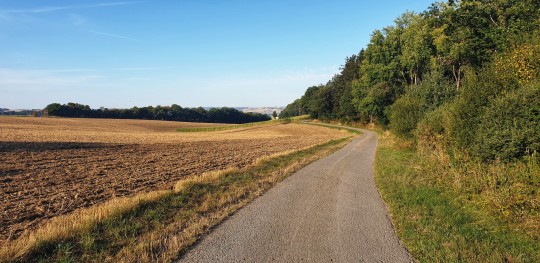
Het eerste gedeelte van deze wandeling loop ik door een mooi naaldbos. De zonnestralen schijnen her en der tussen de bomen door waardoor er weer een magisch effect ontstaat 🤩.

Ik kom geen enkele andere wandelaar tegen vanmorgen. Wat een rust!

Ik loop ongeveer drie kilometer voor het eindpunt een stukje over een onverharde weg waarbij een auto mij passeert. De auto stopt en een oudere man draait zijn raampje open. Hij vraagt vriendelijk of ik verdwaald ben. Ik vertel hem over mijn zoektocht naar de bordjes, maar dat ik mijn route inmiddels gevonden heb.

We raken nog uitgebreid aan de praat en hij vertelt over de enorme en extreme droogte waar ook dit natuurpark mee te maken heeft. Het is mooi om te horen en te zien hoe trots iemand is op het gebied waar hij woont, maar ook droevig om de toch wel minder fijne verhalen te horen over de aanhoudende droogte en de impact hiervan op de natuur. Na tien minuten zeg ik hem gedag en loop ik weer verder.
Na ongeveer twee uur ben ik weer terug bij mijn campertje. Ik geniet nog even van het uitzicht om mij heen voor ik instap en terug naar Nederland rijd.
Via België navigeer ik in ongeveer drie en een half uur terug naar huis. Nou ja, nog niet mijn eigen huis want ik heb nog niet mijn sleutel terug. Vanavond blijf ik nog bij mijn moeder logeren in Zoutelande, die dit net als ik maar al te gezellig vindt 😉. Het is weer een warm welkom en we kletsen uitgebreid bij. Mijn nichtje blijft vanavond ook eten, dus ook haar zie ik alvast. Wat gezellig!
Na het eten wil ik graag nog even de duinen over om het strand en de zee weer te zien. De zon gaat bijna onder waardoor de mooie oranje gloed nog de kers op de taart van mijn reis is.


Wat was het mooi, wat heb ik genoten en zooooveel mogen zien! En alle mensen die ik heb ontmoet waren stuk voor stuk bijzonder, aardig en vaak vrijgevig.
Ik deel binnenkort nog hoe ik mijn laatste vrije dagen van mijn roadtrip thuis weer heb volbracht en hoe het voelt om weer thuis te zijn.
Om het gevoel van mijn roadtrip nog wat langer vast te houden deel ik ook nog graag mijn persoonlijke hoogtepunten van mijn roadtrip met jullie op mijn blog 😊. Tot snel!
2 notes
·
View notes
Text
0 notes
Text
𝙼𝚄𝚂𝙴 𝚂𝚃𝙰𝚃𝚄𝚂: 𝙾𝙿𝙴𝙽 *
oklahoma duncan, sempre vista na parte rural do campus da universidade de cara fechada e entre os animais. o curso de medicina veterinária combina com a sua estética interiorana, mas com certeza a carranca não diz jus aos seus vinte e cinco anos. fora isso, é difícil vê-la passeando na cidade, está sempre presa na cooperativa da família. ⸻ 𝒄𝒉𝒆𝒄𝒌 𝒉𝒆𝒓 𝒑𝒊𝒏𝒕𝒆𝒓𝒆𝒔𝒕 𝒃𝒐𝒂𝒓𝒅 @oklaalko


𝒅𝒐𝒔𝒔𝒊𝒆𝒓 ;
imagine-se vivendo em uma grande cooperativa ao longo da vida. os gatos? compartilhados. os ganhos? compartilhados. os animais e as plantações? também compartilhados.
poderia, até mesmo, dizer que as casas eram compartilhadas, mas para tudo existia um limite. a cooperativa duncan estava de portas abertas para todos que quisessem passar por lá, mas tinha as suas particularidades.
o sobrenome adquirido ao longo dos anos, após os imigrantes mexicanos se mesclarem entre os estadunidenses, a família duncan cresceu nas fazendas afastadas do país.
existem pessoas que acreditam na valiosa fortuna escondida pelos estrangeiros, mas a verdade é que - juntos - os duncan aprenderam a viver em harmonia, ajudando uns aos outros ao longo da vida para se estabelecerem com dignidade e respeito.
foi assim que oklahoma cresceu em meio aos primos, tios e avós, sempre fortalecida pelo poder da família.
ativa dentro da cooperativa desde pequena, viveu enclausurada na fazenda por opção… dos pais. cuidava da plantação, dos animais, dos pequenos concertos residenciais e até mesmo da manutenção dos equipamentos de colheita. okla fazia de tudo um pouco, assim como os seus primos - uma tradição passada de pais para filhos.
a primeira oportunidade de colocar os pés para fora da cooperativa foi logo no início da adolescência, quando encontrou a paixão nos esportes. a dança tomava conta do seu ser e bailarina pelo mundo foi a sua primeira perspectiva de carreira fora dos braços familiares, o que assustou toda a comunidade.
os tempos haviam mudado e ela foi a primeira a criar coragem para se debandar do núcleo familiar. não era a primogênita, muito menos a caçula, o que impactou diretamente no pensamento dos primos sobre ela.
o único porém, então, foi que teria que cursar algo que fosse útil para a fazenda, retornando para a família assim que completasse a universidade.
sem pensar duas vezes, optou por medicina veterinária e encontra no curso a sua paixão mais latente. oklahoma cresceu em meio aos animais e nada poderia tirar essa afeição da morena.
todos os dias, luta para manter a bolsa de estudos e garantir que os pais não paguem um tostão da mensalidade - era uma questão de honra, orgulho e responsabilidade.
isso não deleta o fato de ser uma pessoa extremamente desorganizada, minuciosa e agitada. oklahoma consegue ser várias em uma só, principalmente quando enxergam as diferentes versões da jovem por onde ela está.
em meio a família, é doce e cuidadosa com todos ao seu redor — do mais velho ao mais novo. em suas preferências gerais, prefere passar o tempo com os mais experientes e deixar as brincadeiras infantis para suas primas e outros moradores da cooperativa.
na universidade, no entanto, sua falta de confiança e convivência com o mundo desconhecido a tornam pedante, arrogante e extremamente estressada. é muito segura de si e reconhece todas as vontades latentes dentro dela, mas não entende a melhor forma de se expressar. com seus amigos, tende a ser muito amável, mas não no mesmo nível que seria em seu lar.
além de tudo, a jovem é expressiva de todas as formas, tornando simples entender o que ela está sentindo. não gosta de se esconder e nem que escondam dela as verdadeiras emoções — o que pode ser um pouco contraditório considerando a sua desconfiança com o mundo.
𝒔𝒕𝒂𝒕𝒔 ;
nome. oklahoma duncan. apelido. okla, vet, duncan. gênero. mulher cis. pronomes. ela/dela. orientação. heterossexual. idade. vinte e cinco anos. mapa astral. virginiana. cidade natal. tuscaloosa. ocupação. estudante de medicina veterinária. faceclaim. sofia carson.
0 notes
Text
Veters.
Het dagelijkse ritueel van veters strikken lijkt op het eerste gezicht misschien eenvoudig, maar wiskundig gezien verbergt deze handeling een verrassende complexiteit. Wat we vaak voor lief nemen, kan worden ontrafeld tot een fascinerend samenspel van knopen en lussen, een gebied dat in de wiskunde bekend staat als de topologie. In dit artikel duiken we in de wiskundige formule achter het…

View On WordPress
0 notes
Text
CHAMP O2 LOW (stockverkoop)
Eigentijds comfortabel en veilig
De laag uitgesneden Safety Jogger CHAMP O2 LOW veiligheidsschoenen bieden ongeëvenaard comfort en bescherming met elastische veters voor een perfecte pasvorm, SR-slipweerstand, ESD-bescherming, uitneembaar voetbed en pijnverlichting in de lichaamshouding.

View On WordPress
0 notes
Text
COMPRAR DOPPLER VETERINARIO PARANÁ
A LHVMED é a escolha ideal para quem busca comprar Doppler veterinário no Paraná. Com anos de experiência no mercado de equipamentos veterinários, a LHVMED oferece uma ampla variedade de produtos de alta qualidade, incluindo o Doppler veterinário.
#AnestesiaVeterinária#Autoclave#CanilveterinárioemSP#Centrífuga#BaiaVeterinária#DopplerVeterinário#UltrassomDentário#EquipamentosVeterinários#Laringo#MesaCirúrgiaVeterinária#UltrassomVeterinario#Veterinária
0 notes